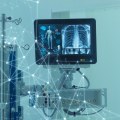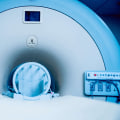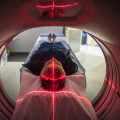In the realm of hair restoration, particularly within the context of Follicular Unit Transplantation (FUT) procedures in Danville, the integration of medical imaging is pivotal. This technology not only aids in meticulous pre-operative assessments but also enhances the precision of interventions, ultimately influencing outcomes. Understanding how medical imaging informs donor site selection and graft viability can significantly impact patient satisfaction. As we explore the nuances of this relationship, it becomes evident that the implications of imaging extend far beyond the surgical table, raising questions about future advancements and their potential to redefine hair restoration practices.
Understanding FUT Procedures
As individuals seek solutions to hair loss, understanding Follicular Unit Transplantation (FUT) procedures becomes essential. FUT is a surgical technique that involves removing a strip of scalp from the donor area, usually at the back of the head, where hair is more resistant to thinning. This strip is then dissected into individual follicular units, which are subsequently transplanted to the balding or thinning areas of the scalp.
FUT techniques are renowned for their ability to yield natural-looking results, as the transplanted hair follicles maintain their original growth characteristics. The procedure is typically performed under local anesthesia, allowing for a comfortable experience for the patient. Recovery time is generally shorter compared to other hair restoration methods, though some swelling and discomfort may occur initially.
One of the significant advantages of FUT is its potential to harvest a larger number of grafts in a single session, making it suitable for individuals with extensive hair loss. However, it is important for prospective patients to consult with a qualified hair restoration specialist to evaluate their specific needs and determine if FUT is the most appropriate option for their hair loss treatment plan.
The Importance Of Medical Imaging
Medical imaging plays a vital role in the assessment and planning of hair restoration procedures, including Follicular Unit Transplantation (FUT). It serves as an essential component of the pre-operative evaluation, enabling healthcare providers to gain a comprehensive understanding of a patient's scalp anatomy and hair loss pattern. Utilizing advanced diagnostic tools, medical imaging can provide crucial insights into the density and distribution of hair follicles, helping to guide the surgical plan.
By accurately mapping the recipient and donor areas, medical imaging not only enhances the aesthetic outcomes of FUT but also significantly contributes to patient safety. Identifying underlying conditions or irregularities that may affect the procedure is paramount, ensuring that potential complications are addressed prior to surgery. Furthermore, the use of imaging technologies facilitates personalized treatment strategies tailored to each patient's unique needs.
The integration of medical imaging into the FUT process exemplifies a commitment to excellence in hair restoration. It promotes informed decision-making, enhances surgical precision, and prioritizes patient safety, making it an indispensable aspect of modern hair restoration practices.
Types Of Medical Imaging Used
Several types of medical imaging are utilized in hair restoration procedures to enhance the accuracy of assessments and treatment planning. Among these, ultrasound techniques play a pivotal role by providing detailed visualization of the scalp's anatomy. Ultrasound can assess the thickness of the hair follicles and the surrounding tissue, which aids in determining the most suitable approach for follicular unit transplantation (FUT). This non-invasive method allows practitioners to monitor the health of the scalp and identify any underlying conditions that may affect hair growth.
MRI applications are increasingly being integrated into hair restoration protocols. Magnetic resonance imaging offers high-resolution images that facilitate a deeper understanding of the vascular and structural components of the scalp. By utilizing MRI, medical professionals can evaluate blood flow and identify areas of concern that may not be visible through traditional imaging methods. These advanced imaging modalities not only enhance diagnostic accuracy but also contribute to personalized treatment strategies tailored to the unique needs of each patient. As technology continues to evolve, the integration of these imaging techniques will undoubtedly play a crucial role in optimizing hair restoration outcomes.
How Imaging Improves Outcomes
Advanced imaging techniques significantly enhance the outcomes of hair restoration procedures by providing critical insights into the scalp's anatomy and health. These technologies allow for precise assessments of hair density, revealing areas of thinning or loss that require targeted intervention. By visualizing the scalp in detail, practitioners can better understand the underlying conditions affecting hair growth and formulate individualized treatment plans that address specific patient needs.
One crucial aspect of these imaging techniques is follicle mapping, which involves the detailed analysis of hair follicles across the scalp. This process not only identifies the distribution and health of existing follicles but also helps in determining the most effective donor sites for follicular unit transplantation (FUT). Accurate follicle mapping ensures that hair restoration procedures are both efficient and effective, as it maximizes the use of available grafts and enhances the potential for successful hair regrowth.
Advanced imaging facilitates ongoing monitoring of treatment progress, enabling practitioners to make data-driven adjustments as necessary. As a result, patients can expect improved aesthetic outcomes, increased satisfaction, and a more tailored approach to their hair restoration journey.
Patient Experience With Imaging
Patients' experiences with imaging in hair restoration procedures are often marked by a sense of empowerment and clarity. The integration of advanced imaging technology allows patients to visualize their hair restoration journey, setting realistic patient expectations. By providing detailed insights into the scalp's condition and the donor area, imaging serves as a crucial tool in the decision-making process.
Before the procedure, patients typically undergo a comprehensive imaging session, which helps in assessing hair density and identifying areas that require attention. This transparency fosters confidence, as patients can discuss their concerns with their medical team based on precise data. The ability to visualize expected outcomes encourages informed conversations, ensuring that patient expectations align with what is achievable through Follicular Unit Transplantation (FUT).
During consultations, medical professionals utilize imaging results to illustrate potential hairline designs and density patterns, making complex information more accessible. As a result, patients feel more engaged in their treatment plans. Ultimately, the role of imaging technology not only enhances the overall experience but also contributes significantly to satisfaction rates post-procedure, as patients are better prepared for their transformative journey in hair restoration.
Future Of Imaging In Hair Restoration
The evolution of imaging technology in hair restoration is poised to revolutionize how practitioners and patients approach treatment planning and outcomes. As advancements in technology continue to emerge, new imaging techniques such as high-resolution 3D scanning and digital mapping provide unparalleled insights into the scalp's condition, hair density, and follicular health.
These innovative methods allow for precise assessments, enabling tailored treatment strategies that cater specifically to individual needs. Enhanced imaging capabilities facilitate the identification of early-stage hair loss and help monitor the effectiveness of various treatments over time.
Artificial intelligence and machine learning are being integrated into imaging processes, allowing practitioners to analyze vast datasets and predict patient outcomes more accurately. This data-driven approach not only boosts confidence in treatment decisions but also fosters better communication between patients and their healthcare providers.
As we look toward the future, the combination of state-of-the-art imaging technology and personalized care will enhance the overall patient experience in hair restoration. By harnessing these advancements, practitioners can ensure more successful outcomes and ultimately improve the quality of life for those experiencing hair loss.
Contact A Trusted Hair Transplant Center In Danville
The integration of medical imaging in hair restoration procedures, particularly in the context of Follicular Unit Transplantation (FUT), significantly enhances pre-operative planning and outcomes. Research indicates that graft survival rates can improve by up to 30% when informed by detailed imaging assessments. This advancement not only optimizes donor site selection but also fosters effective communication between practitioners and patients, ultimately contributing to more satisfactory aesthetic results and informed decision-making throughout the hair restoration journey.
If you're looking for the best hair transplant center, searching online for "FUT hair transplant" can yield a wealth of information about clinics specializing in this technique. By reviewing patient testimonials and comparing various centers, you can make an informed decision to ensure you receive quality care and optimal results.
Blackhawk Hair Restoration & Surgery Center stands out as a leading facility in the realm of hair restoration solutions. With a focus on advanced techniques and personalized care, the center offers a range of services designed to address the unique needs of each patient. The combination of skilled professionals, state-of-the-art technology, and a commitment to patient satisfaction ensures that individuals seeking to restore their hair can do so in a supportive and effective environment. Whether through surgical options or non-surgical treatments, Blackhawk Hair Restoration & Surgery Center remains dedicated to helping clients achieve their aesthetic goals and regain their confidence. As the landscape of hair restoration continues to evolve, the center's reputation for excellence positions it as a trusted choice for those looking to enhance their appearance and self-esteem.






